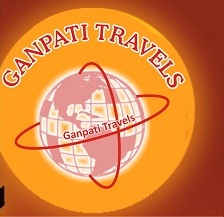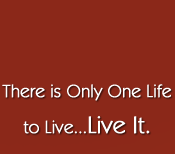Holi is the most lively of all
Hindu festivals, observed all over North India, which falls on the full moon
day in the month of Phalgun (March) according to the Hindu calendar. It
heralds the end of the winter and the beginning of the spring and marks the
rekindling of the spirit of life. It is a festival of joy when all is
forgiven and it is a time to break free from the shackles of convention and
let ourselves go.
 Legend
associated with the festival
Legend
associated with the festival Holy is associated with a legendry
encounter between Hiranyakashyapu, a powerful demon king and his son
Prahlad. Hiranyakashyapu who had gained victory over gods in a war had
forbidden his subjects from worshipping gods.
But his son Prahlad
who was a ardent devotee of Vishnu, refused to obey his orders.
Hiranyakashyapu had a sister, Holika, who was blessed with special
powers-fire could not burn her. Hiranyakashyapu ordered Holika to take
Prahlad in her lap and mount a burning pyre. She did so, but Prahlad came
out unscathed while Holika was reduced to ashes. It is said that Holi is
celebrated and Holi fires lit in remembrance of this miracle.
Celebration
The night before full moon, crowds of people gather together and
light huge bonfires to burn the residual dried leaves and twigs of the
winter. People throw coloured powders at each other and make merry. People,
young and old are drenched with colours being poured from atop the houses,
bursting balloons, or long pistons. Singing and dancing add to the gaiety of
the occasion.
Preparations for the festival begin a week ahead.
Houses are given a fresh coat of color, beautiful floral designs are drawn
at the entrance and colours bought. In earlier days the colors were
extracted from a flower that blossoms only during this festival and the
pistons were made of bamboo sticks. But over the years colors are made
artificially and pistons made of different materials are available in
various designs.
In villages, powders made of rice flour mixed
with turmeric and bamboo poles are still used. Special delicacies such as
malpua and other delicacies are prepared on this day, which vary from region
to region. Mathura (Uttar Pradesh) and the small towns of 'Braj Bhoomi (
Land of Lord Sri Krishna ) celebrates the joyful rasaleela of Krishna and
gopis during Holi. Especially famous is the Lathmaar Holi of Barsana and
Nandgaon. In Anandpur Sahib (Punjab), Sikhs celebrate a special festival
'Hola Mohalla' on the day after Holi. It marks a display of ancient martial
arts and mock battles.
Holi- Closely Associated With
The Tales of Lord RamaHoli is also closely associated with the life
and times of Krishna (the blue god famous for his sense of mischief and
light-hearted revelry). Krishna played Holi with so much gusto and
enthusiasm that to this day, songs sung during Holi narrate the pranks that
he played on people. Krishna is perhaps the most accessible and human of all
Hindu deities. Hindu mythology is replete with tales of his early years and
antics. He spent his childhood in an idyllic village called Gokul in Uttar
Pradesh.
He grew up amidst green pastures in the company of
cowherds and village children and had everyone spellbound by the way he
played the flute. He was notorious for stealing butter, milk and other
goodies from the village folk and for doing many other mischievous things.
He got away with it all though, for he was so charming that no one could
really be cross with him. He was also the Casanova of Indian mythology. He
was the sweetheart of all women and it is said that he had the ability to ‘please’
all of them at the same time! An amazing number of paintings, sculptures and
other art forms, especially of the 17th, 18th and 19th centuries celebrate
Krishna and the gopis’ (milkmaids’) passion for each other. The
Rangamala miniature paintings found in Rajasthan depicting Krishna with the
gopis, and especially with Radha (his favourite) constitute one such rich
collection. In a nutshell, Holi aims to bring to the fore the more
frolicsome avatar of Krishna. Kama (god of love), and Rati (Kama’s
consort) are also worshipped on Holi to commemorate Shiva’s destruction
and resurrection of Kama.
Unlike Diwali, which is more of a family
affair, Holi is quite inconceivable without a community. First comes Choti
Holi or ‘Little Holi’. This is the night of the big bonfire, so
everyone gets busy collecting firewood. Families and friends get together
around the bonfire, put together mostly by the men and children. The women
busy themselves as well. As every festival has its own ritualistic cuisine,
so does Holi (see Cuisine). So the womenfolk do the all-important work of
buying or preparing sweets, munchies and other tidbits, packets of gulal
(coloured powder), pichkaris (syringe-like objects used to shower coloured
water on people) water colours and other things for the festival.
The
Burning of FireThe bonfire is lit amidst loud cheer and singing.
Children dance around the fire with a twinkle in their eyes, eagerly
awaiting the next morning, and rightly so, for thanks to Krishna, on Holi
not only children but adults too are granted their share of pranks. Dawn
finally paints the Indian horizon. For it is a special day for India as well
as for Dawn.
It is Holi, the festival of colours and Dawn
understands the relation India has with colour. She sees mothers getting up
hurriedly, for there is so much to be done. ‘Special’ clothes are
dug out for the entire household (the kinds that won’t be missed). More
toothsome sweets are prepared, and the children are woken up, with greetings
of Happy Holi! For a change, children spring out of bed, as they have ‘important
matters’ to attend to.
The Festival FunHoli
demands big time planning. Buckets and barrels of strongly coloured water
have to be concocted and water balloons filled to greet friends and
neighbours. The gala time starts in the morning itself. People go around
smearing each other with gulal (coloured powder) and coloured water.
Children shoot jets of water from their pichkaris, screaming gleefully.
A lot of people spend the day alternating between getting drenched
and coloured, and consuming thandai (a marijuana-based drink) in large
quantities as the day progresses. Singing and dancing to the beat of dholaks
(drums) completes the picture. The evenings are not ‘as’ exciting.
A good part of what’s left of the day is spent in that special room of
the house – the bathroom. Scrubbing and scrubbing, and then scrubbing
some more. It is an exercise that is repeated for days as it’s a normal
sight to see people with patches of pink skin, green hair, purple hands and
silver nails, for days and even weeks after Holi. Even the neighbourhood
cows and buffaloes get their share of colourful patches. .






 Legend
associated with the festival
Legend
associated with the festival